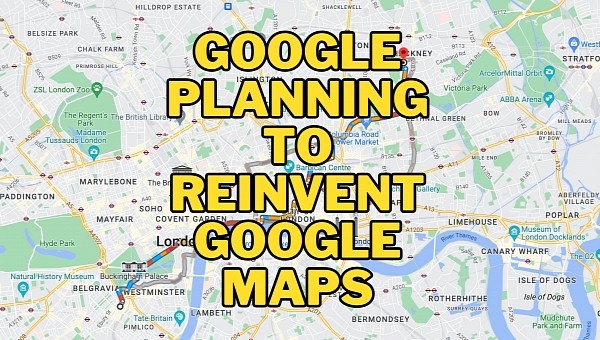The search experience in Google Maps could be significantly improved with a new Google technology that allows users to create special layers out of performed queries.
In other words, every single search that they perform in Google Maps would produce a new layer in the application. Eventually, users can conduct multiple searches and toggle between layers from the app’s main interface.
The system is detailed in a new patent that covers focused search query layers in Google Maps.
To better understand how the feature works, imagine you’re conducting searches for gas stations and fast-food restaurants. When you search for gas stations, Google Maps can show the nearby locations where you can fill up the tank. The information is displayed on the map using the visible layers. When the second search is performed, the navigation app shows fast-food restaurants using the available layers.
Eventually, users would be able to combine the provided information into a unified layer that allows them to find nearby locations easier.
When a driving route is active, drivers would be allowed to create multi-stop navigation based on the provided information. As such, they would be able to see both gas stations and fast-food restaurants on the visible layers.
Google explains in the patent that the provided information would be generated to be relevant to the other search queries. This once again helps plan multi-stop navigation, especially as users can perform multiple searches and see the results in a unified layer.
This isn’t the only feature that Google is working on for Google Maps. The company has recently patented another brilliant idea, allowing the navigation service to provide users with more natural directions when using Google Maps.
Google explains that its platform could take into account nearby landmarks to provide more relevant directions to users. For example, Google Maps would no longer use street names and building numbers exclusively for navigation. The landmarks would allow the application to provide users with instructions such as “head towards the yellow house” based on a scan of the surroundings.
Google says it could also use crowdsourcing data for such information. In the case of a concert, for example, Google Maps could tell users to walk toward the music, therefore generating navigation instructions that are relevant to a specific time and location.
All these ideas are currently in the patent stage, so it could take some time before they make their way to production devices. However, Google has been working on a natural conversation model for Google Maps for quite some time, so this approach should be here sooner rather than later. For now, Google is working around the clock on completing the work on the immersive view and expanding its eco-friendly routes to more regions worldwide.
The system is detailed in a new patent that covers focused search query layers in Google Maps.
To better understand how the feature works, imagine you’re conducting searches for gas stations and fast-food restaurants. When you search for gas stations, Google Maps can show the nearby locations where you can fill up the tank. The information is displayed on the map using the visible layers. When the second search is performed, the navigation app shows fast-food restaurants using the available layers.
Eventually, users would be able to combine the provided information into a unified layer that allows them to find nearby locations easier.
When a driving route is active, drivers would be allowed to create multi-stop navigation based on the provided information. As such, they would be able to see both gas stations and fast-food restaurants on the visible layers.
Google explains in the patent that the provided information would be generated to be relevant to the other search queries. This once again helps plan multi-stop navigation, especially as users can perform multiple searches and see the results in a unified layer.
This isn’t the only feature that Google is working on for Google Maps. The company has recently patented another brilliant idea, allowing the navigation service to provide users with more natural directions when using Google Maps.
Google explains that its platform could take into account nearby landmarks to provide more relevant directions to users. For example, Google Maps would no longer use street names and building numbers exclusively for navigation. The landmarks would allow the application to provide users with instructions such as “head towards the yellow house” based on a scan of the surroundings.
Google says it could also use crowdsourcing data for such information. In the case of a concert, for example, Google Maps could tell users to walk toward the music, therefore generating navigation instructions that are relevant to a specific time and location.
All these ideas are currently in the patent stage, so it could take some time before they make their way to production devices. However, Google has been working on a natural conversation model for Google Maps for quite some time, so this approach should be here sooner rather than later. For now, Google is working around the clock on completing the work on the immersive view and expanding its eco-friendly routes to more regions worldwide.






